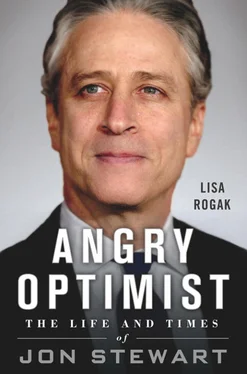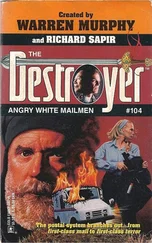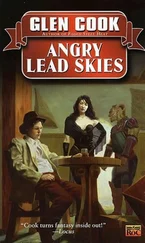“It’s the little things in my life that have changed,” he said. “I don’t have to worry any more about taking a cab or buying a new CD.” Always an animal lover, he brought his two cats with him, one of which was blind. It took the cat a while to adjust to the new accommodations. “He kept walking into the walls, poor guy.”
He also thought his luck with women would improve once he got his own TV show—especially since a number of models, actresses, and even Playboy Playmates appeared on the show. “They come on, I feed them cheese, and they go, ‘Well, thanks a lot. I have to go now and have sex with a big construction worker–looking guy.’”
To his great dismay, the reverse actually happened, and he referred to his love life as stunted. “I’m finally in a position where women would find me more appealing, but I don’t really have that much time,” he lamented. “I’m basically really isolated, ’cause I work on the show all the time. And it’s sort of boring. A career is a lovely place to hide from your social life,” he said, adding that the top qualities he looked for in a woman were “compassion and a sense of joy.”
But even if he wanted to pursue women romantically, it was clear that they often regarded him in a different light. Once, after actress Tawny Kitaen appeared on the show, she revealed her true thoughts about Stewart. “You want to take Jon home with you, like a puppy,” she said.
He also discovered that hosting and planning four shows each week was worlds away from showing up at a nightclub, doing a twenty-minute routine, and then maybe having a beer with the other comics before heading back home or to a lonely motel room, with pros and cons all around.
“For me, coming from the comedy clubs, this is a very relaxed atmosphere,” he said. “Nobody’s drunk. It’s not one o’clock in the morning. I don’t have to shout. Everybody seems to be listening. It’s a really good environment.”
On the other hand, there was a great deal of stress involved. His anxiety levels went through the roof and he became sick so often that around the studio his nickname was Susceptible Boy. “My respect for the guys who [host talk shows] has risen dramatically since I’ve tried to do it,” he said. “There’s a lot to keep in mind while you’re out there.”
After all, Stewart was now directly responsible for a full staff. “I try to give as much preparation as I can,” he said, “but there’s a lot of other things that I have to worry about, not only the comedy but also the fact that we tape two shows in the course of one day, which sometimes puts us behind the eight ball.”
There was another issue that Jon never had to worry about onstage at the clubs: his appearance. He now had to select his wardrobe with an eye toward his audience and sit in a chair before each taping while a makeup artist did her stuff. “You don’t want to see him without makeup,” a Daily Show employee would say years later. “He’s not just sallow, he’s the color of a manhole cover.”
“They have to shave my neck… between tapings,” Stewart admitted. “Is that something I shouldn’t have shared?”
But overall, both host and guests didn’t get too worked up over the specifics. Given the informality of the set as well as the age of the demographic, a certain lack of style was the rule. “We could have the conductor of the Philharmonic on, and he’d be wearing overalls,” said Stewart. “I think everybody takes one look at me and says, ‘Okay, this guy looks like he just stepped out of a hamper. I can go on with grass stains.’”
The show hit big almost from the beginning, becoming the second most-watched show on MTV after Beavis and Butt-Head . The audience grew, and it also didn’t hurt that guests loved doing the show. “Letterman’s got a show he’s doing, whereas this is much more casual,” said Quentin Tarantino after appearing on both shows back-to-back. “This wasn’t like doing a talk show. It was like we were just bullshitting.”
“Usually, it’s not fun doing publicity for a movie or show, but I genuinely enjoyed doing his show,” said Daniel Baldwin, one of the Baldwin brothers, who was touting his role on Homicide: Life on the Street at the time. “He’s quirky, he’s nonchalant, and he lets you let your hair down. I would do his show again in a minute. It was a lot of fun. I even watch it now, and I never watch MTV.”
Despite the pressure of essentially driving blind during his debut, there was less to lose on MTV compared with one of the major networks. “It was much easier to debut on a cable talk show,” said Stewart. “There was no hype. It’s much better when viewers find you as opposed to being told to watch you.”
After six weeks of programs, he proved Stern wrong. MTV renewed the show and ordered another twenty-four shows. The New York Post called him one of the “hot new artists of the 90s.”
The boy from Jersey was finally on his way.
* * *
The first season of The Jon Stewart Show was so successful that Viacom—which owned MTV—decided to capitalize on Stewart’s popularity and move it to Paramount, a corporate division that handled syndicated TV shows, to fill an hour-long hole left in the wake of the cancellation of The Arsenio Hall Show . While MTV was indeed a national cable channel, the size of its audience paled next to the programs that Paramount syndicated on the local affiliates of the major networks nationwide. In other words, the size of Stewart’s potential audience was just about to get a lot bigger.
Stewart was thrilled. Not only would his show be syndicated across the country—not just aired on a niche cable channel—but it would be expanded from a half-hour to a full hour starting in September 1994.
He was also wary because the long show would require much more of his time and energy, and he had mixed feelings about that even after signing a five-year contract with Paramount. “I kind of liked my life [before],” he admitted. “I was enjoying myself on MTV. I was starting to branch out. I wouldn’t have taken the gig unless I thought I’d be OK if I lost it. But if you’re going to play it safe, don’t be in show business.”
His exhilaration didn’t take long to wear off. The ratings soon began to tank, largely in part because under Paramount, he had to kowtow to higher-ups in charge of massaging syndicated content to appeal to a broad range of affiliate stations in markets all over America. Previously, at MTV, catering to slackers who were too lazy to change the channel after Beavis and Butt-Head ended had been his primary worry.
At one point, Paramount suggested that he wear a tie on the set. His response: “I guess it would be nice, if someone was getting married on the show.
“It seems a conceit that if you have your own show, you wear a tie,” he said. “We do our show more from the hamper. Whatever we find that day floating on top that doesn’t seem dirty—boom. It’s right out there.”
Comedian Lizz Winstead, Stewart’s friend from the stand-up circuit, was asked to join the staff as talent coordinator. Her job was to find unknown but entertaining guests for the show, and she regularly combed through public-access cable TV shows for possibilities, but admitted it was a real challenge. “Some people are just crazy,” she said. “You can’t have them on because they’re certifiable. There’s this woman who thinks she’s Underdog’s girlfriend.”
He also served as executive producer of the new version of the show, and he regularly skirmished with those from the executive suite. “When it comes down to content, that’s where I choose my battles,” he said. “If they say, well, we’d love it if you’d wear a black sweater tonight, I’ll usually do that, but if they say, well we don’t think that bit’s funny, we don’t want you to run it, I say, ‘Well, we do, ’ so we put it on.”
Читать дальше












